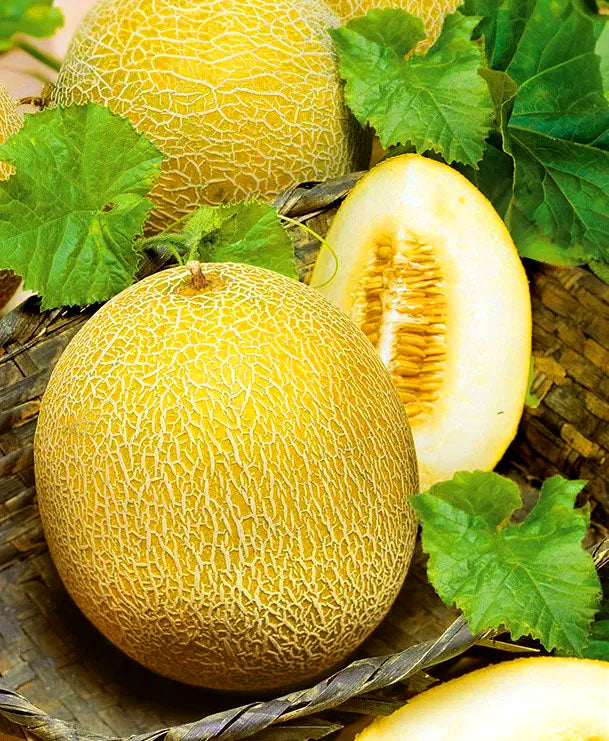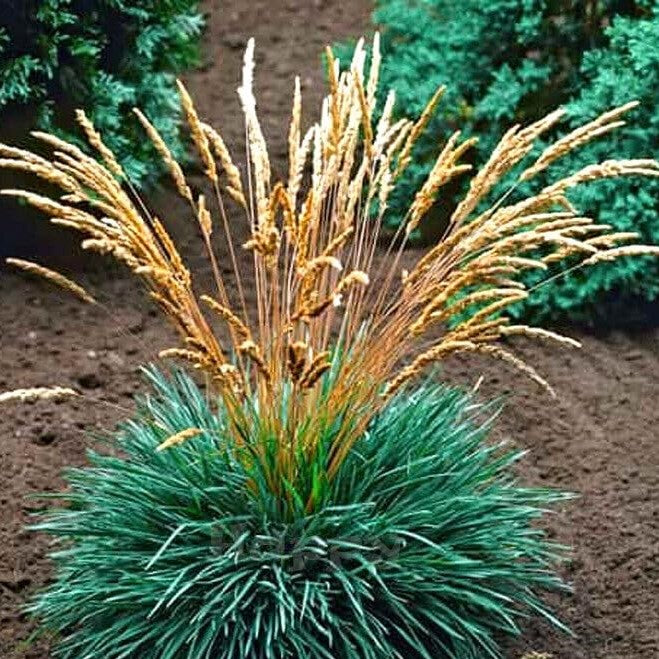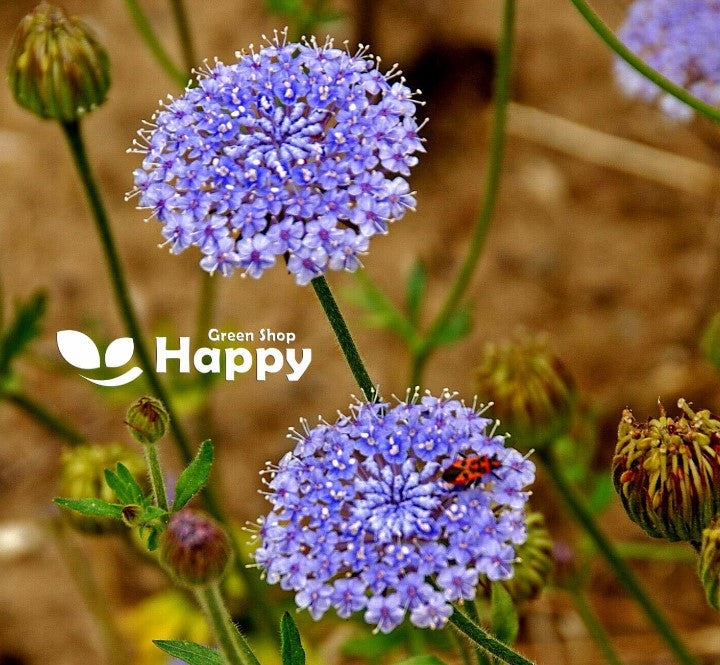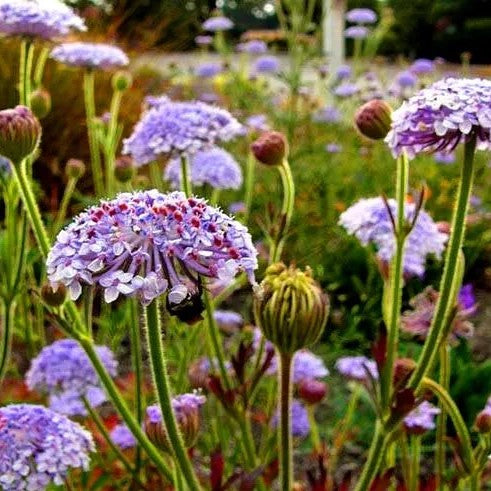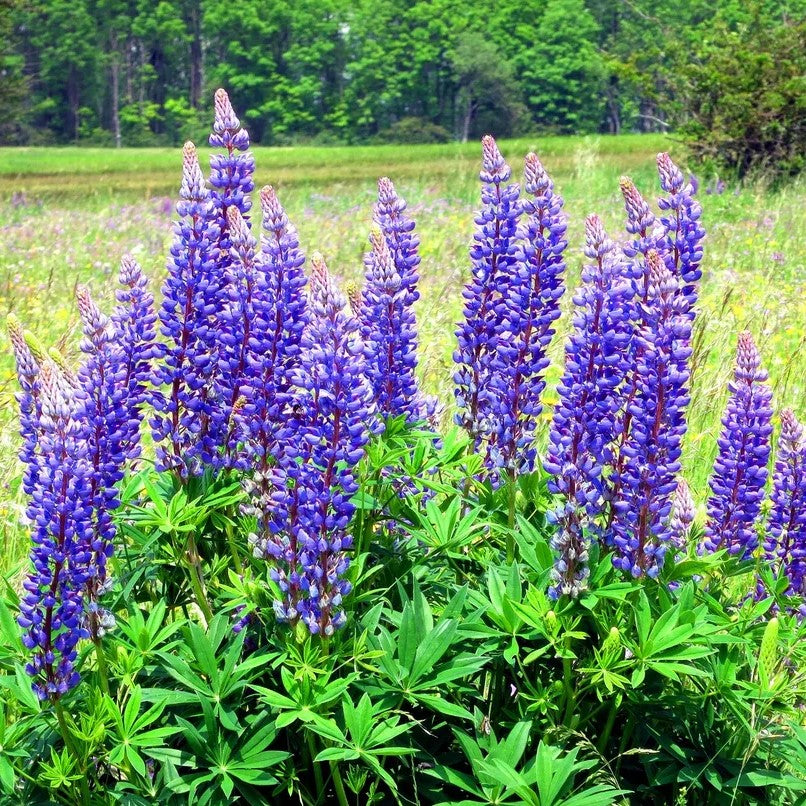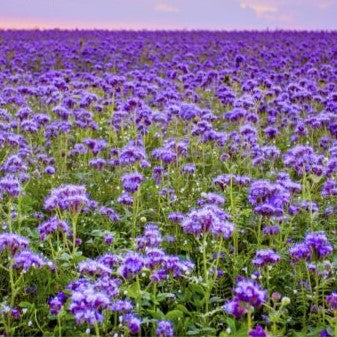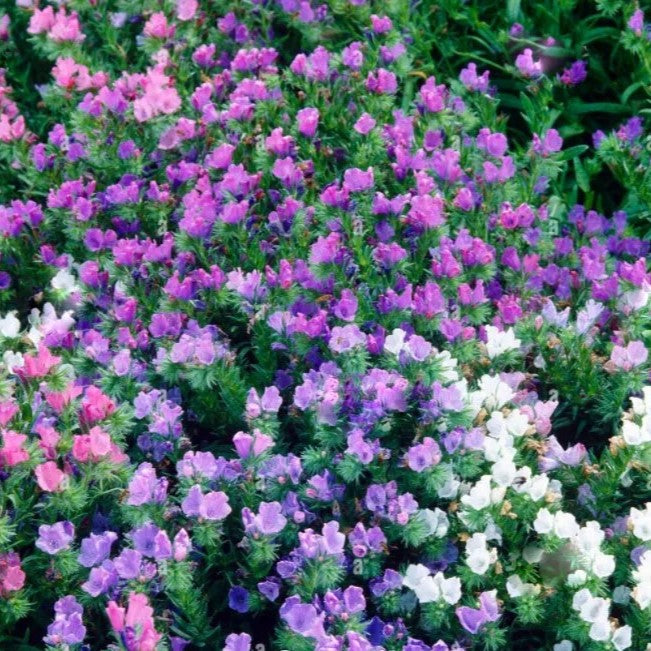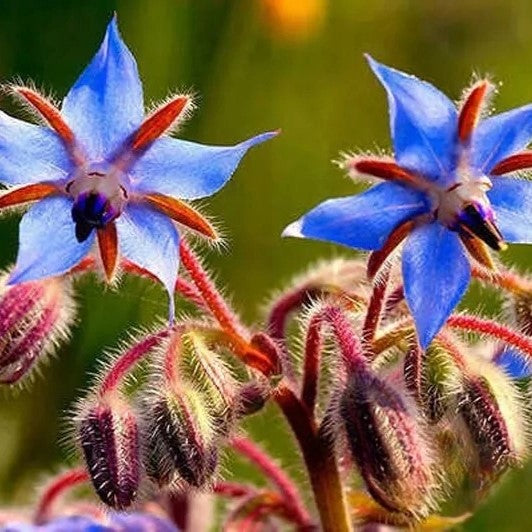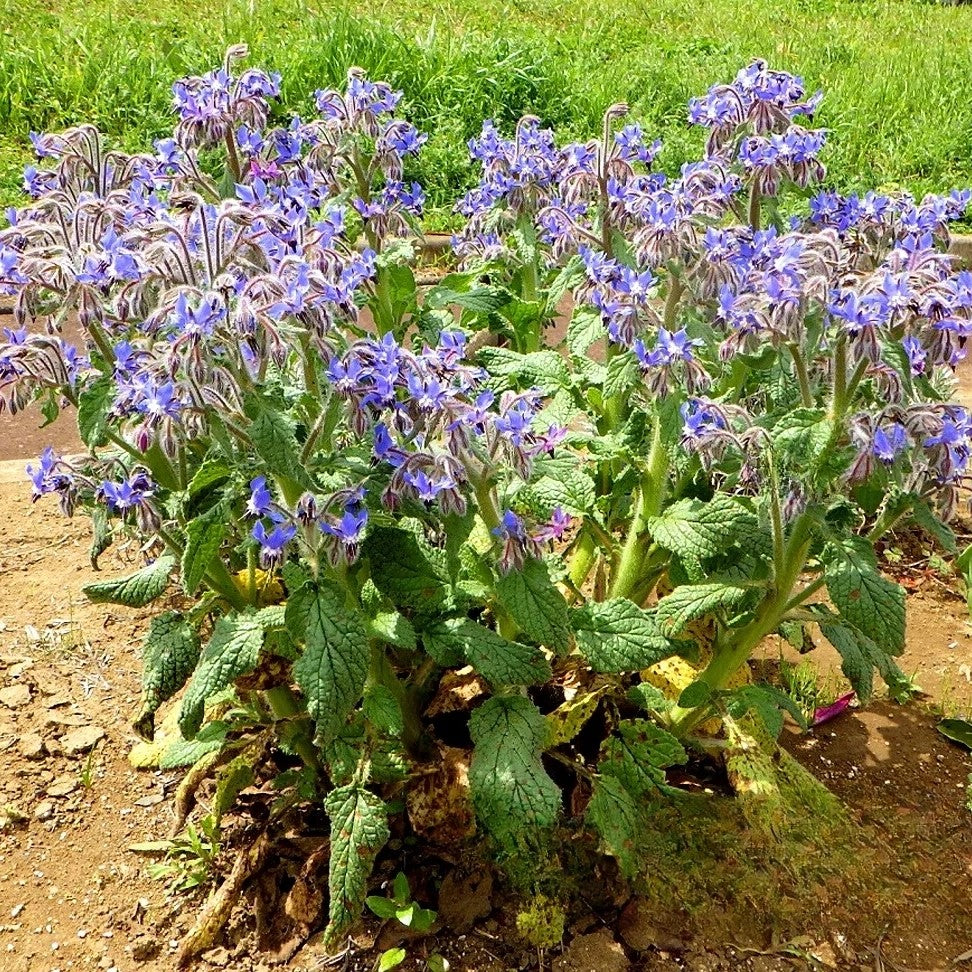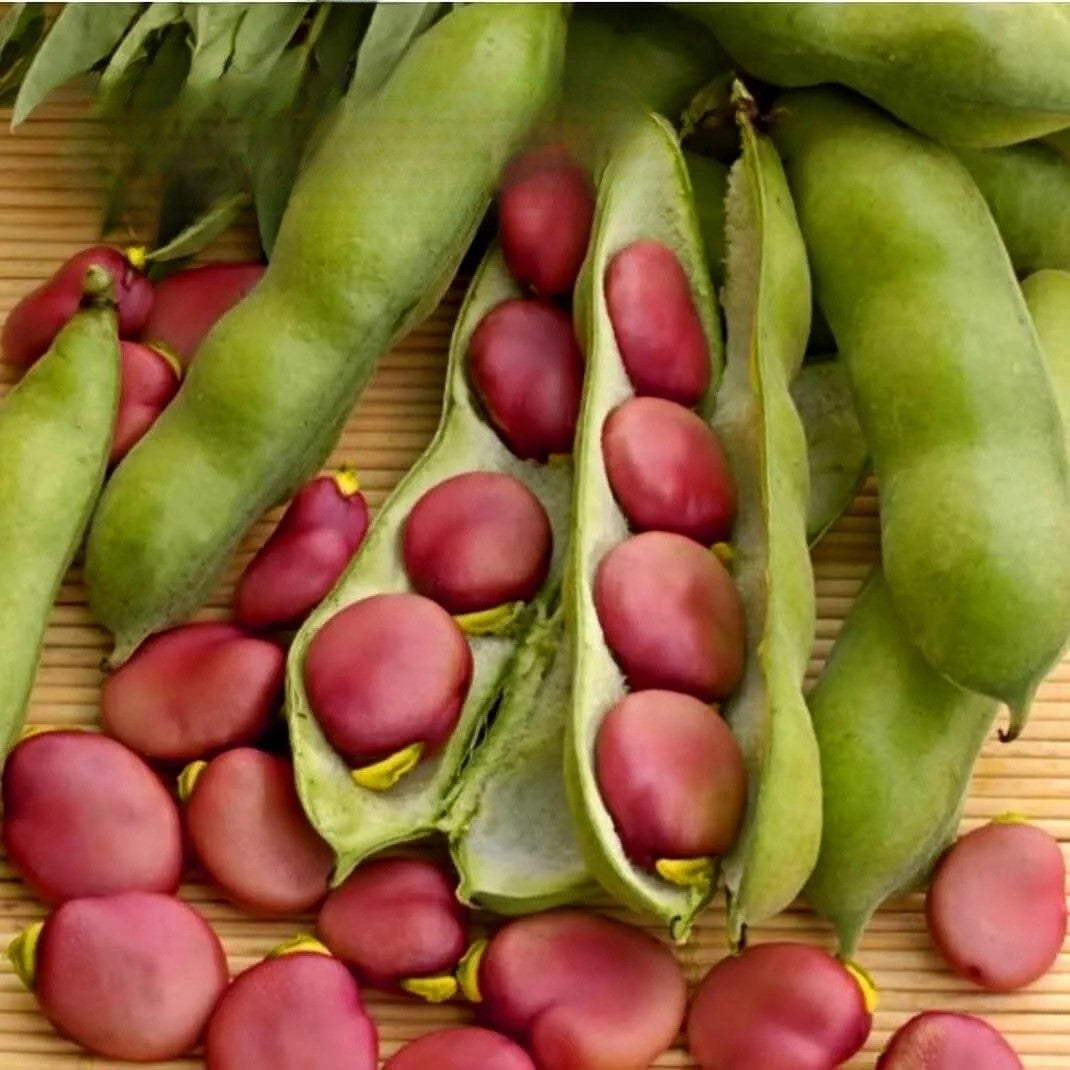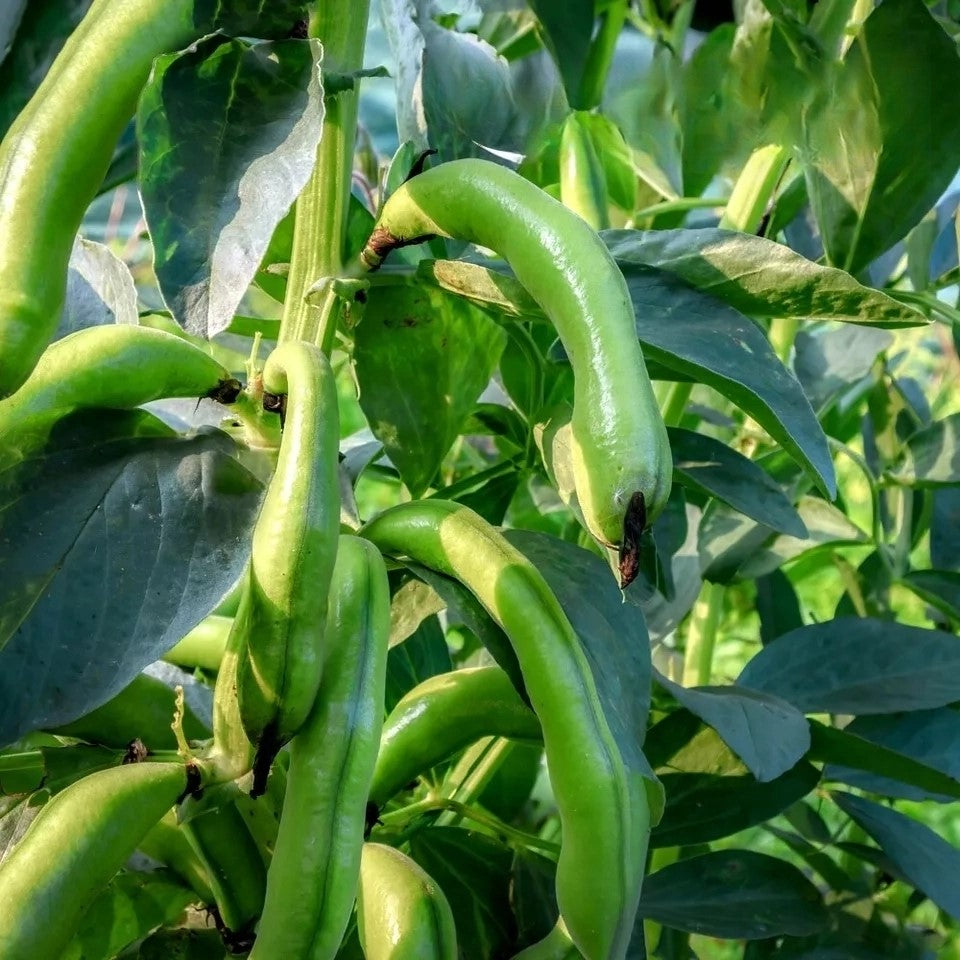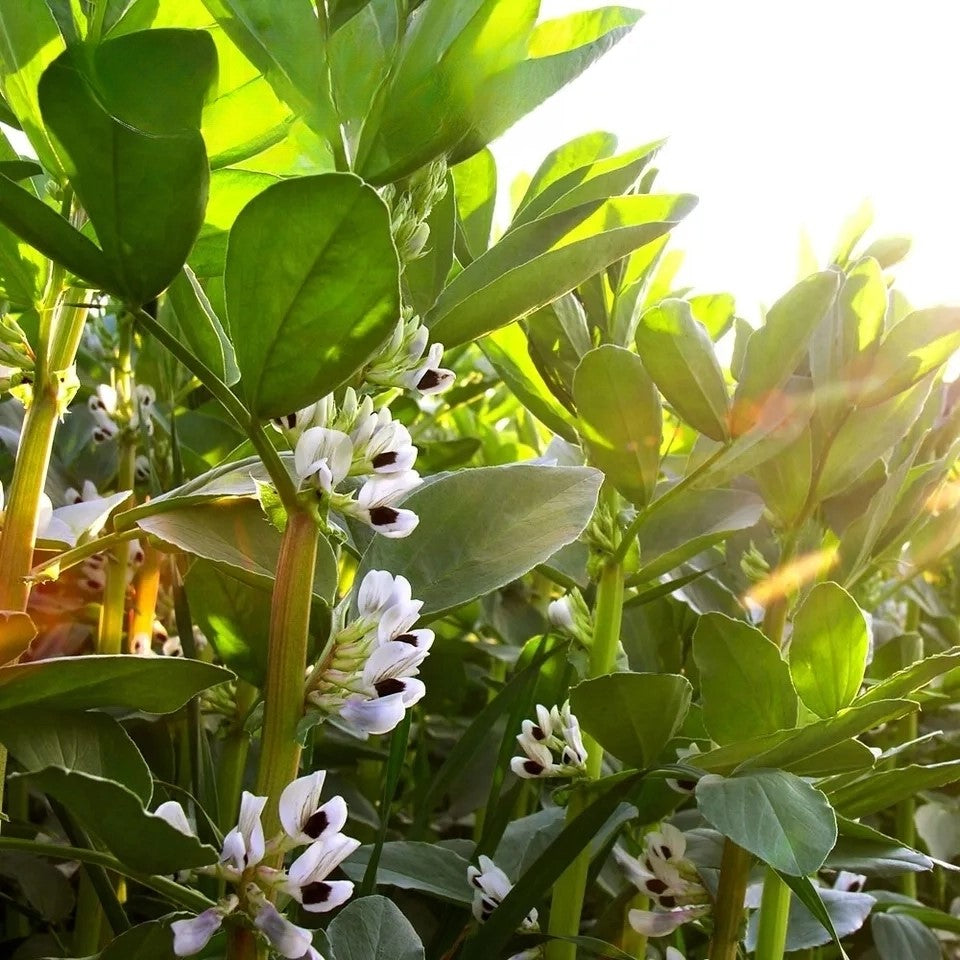Sort by:
1113 products
1113 products
Blue Hair Grass – 300 Seeds (Koeleria glauca)
Add elegant texture and cool-toned color to your garden with Blue Hair Grass (Koeleria glauca). This compact, ornamental grass forms neat clumps of fine, silvery-blue foliage, topped with delicate seed heads in early summer. Its striking appearance makes it ideal for rock gardens, borders, containers, or as a soft contrast among colorful flowers. Hardy and drought-tolerant, it’s a reliable choice for low-maintenance landscapes.
Why Grow Blue Hair Grass?
-
Attractive silvery-blue foliage year-round
-
Airy seed heads add movement and lightness
-
Compact and low-growing, perfect for edging or containers
-
Tolerant of poor, sandy, or dry soils
-
Low-maintenance and hardy perennial
Key Features
-
Type: Perennial ornamental grass
-
Height: 30–40 cm
-
Spread: 25–30 cm
-
Position: Full sun; well-drained soil
-
Uses: Rock gardens, borders, containers, ground cover, naturalistic plantings
Ideal For
-
Adding texture and color contrast to mixed plantings
-
Drought-tolerant, low-care gardens
-
Coastal and gravel gardens
-
Stylish modern landscaping
Sowing & Growing
-
Sow indoors: February–April in trays of moist compost, lightly covering the seed
-
Germination: 14–28 days at 18–22°C
-
Transplant seedlings when large enough to handle
-
Plant out after frost, spacing 25 cm apart
-
Flowers and produces seed heads in early summer
Blue Lace Flower Seeds (Didiscus caeruleus / Trachymene caerulea)
The Blue Lace Flower is an elegant and delicate annual, much loved for its airy umbels of soft sky-blue blossoms. Each flower head resembles lacework, carried on long slender stems, making it ideal for cutting. With its light, lacy texture, this plant brings charm and movement to borders, cottage gardens, and wildflower-style plantings. It is also a superb choice for floral arrangements, both fresh and dried.
What Makes It Special
-
Produces lace-like umbels of pastel blue blooms
-
Excellent cut flower with a long vase life
-
Attractive to bees, butterflies, and pollinators
-
Adds a soft, romantic touch to borders and bouquets
Key Features
-
Botanical name: Didiscus caeruleus / Trachymene caerulea
-
Common name: Blue Lace Flower
-
Seed count: Approx. seeds per pack
-
Height/Spread: 45–60 cm tall, 20–30 cm spread
-
Position: Full sun, well-drained soil
-
Flowering period: Summer to early autumn
-
Lifespan: Half-hardy annual
Ideal For
-
Cottage gardens
-
Wildflower meadows
-
Borders and mixed beds
-
Cut flower and dried arrangements
-
Pollinator-friendly gardens
Sowing Instructions
-
When to sow: March–May indoors, or April–June outdoors after frost has passed
-
How to sow:
-
Sow seeds thinly in trays with seed compost or directly outdoors in fine soil
-
Lightly cover seeds with a thin layer of soil or vermiculite
-
Keep moist until seedlings appear (14–21 days)
-
-
Transplant/Thin: Space plants 20–30 cm apart
-
Care: Deadhead to prolong flowering; provide support in windy sites
Blue Lupine – Seeds (Lupinus angustifolius)
Blue Lupine (Lupinus angustifolius) is a stunning annual or short-lived perennial producing tall spikes of vivid blue pea-like flowers. Blooming from late spring to early summer, it adds vertical interest and vibrant color to borders, cottage gardens, and mixed flower beds. Hardy and easy to grow, this variety attracts bees and butterflies, making it perfect for pollinator-friendly gardens and long-lasting summer displays.
Why Grow "Blue Lupine"
-
Tall spikes of striking blue flowers
-
Long flowering season from late spring to early summer
-
Hardy, low-maintenance annual or short-lived perennial
-
Pollinator-friendly and adds vertical interest
Key Features
-
Type: Annual/Short-lived perennial (Lupinus angustifolius)
-
Height: 60–90 cm
-
Flowering: Late spring to early summer
-
Position: Full sun
-
Uses: Borders, cottage gardens, mixed flower beds, pollinator gardens
Ideal For
-
Vertical color in borders and mixed beds
-
Cottage-style gardens
-
Pollinator-friendly planting schemes
-
Long-lasting summer floral displays
Sowing & Growing
-
Sow indoors: February–April in trays or pots
-
Sow outdoors: April–May after frost
-
Germination: 14–21 days at 18–22°C
-
Thin seedlings 25–30 cm apart
-
Prefers well-drained soil in full sun
-
Mulch in winter for protection in colder regions
Blue Petunia Star F1 Prio – 50 Seeds (Petunia multiflora)
Description:
Create a stunning display of vibrant blue in your garden with Blue Petunia Star F1 Prio (Petunia multiflora). This vigorous F1 hybrid produces star-shaped, bright blue flowers on compact, well-branched plants. Perfect for hanging baskets, containers, and garden borders, it blooms continuously from spring through autumn, offering long-lasting color with minimal care. Ideal for gardeners seeking high-performance, eye-catching blooms.
Key Features
-
Star-shaped, vibrant blue flowers
-
Compact and well-branched growth habit
-
Continuous flowering from spring to autumn
-
Perfect for baskets, containers, and borders
-
Easy to grow and low maintenance
Ideal For
-
Hanging baskets and window boxes
-
Patio containers and balcony planters
-
Garden borders and bedding displays
-
Long-lasting seasonal color
Sowing & Growing
-
Sow Indoors: February–April
-
Transplant Outdoors: May, after frost
-
Germination: 10–14 days at 20–24°C
-
Plant Spacing: 25–30 cm apart
-
Height: 20–25 cm
-
Light: Full sun
-
Soil: Fertile, well-drained
Care Tips
-
Deadhead regularly to encourage continuous blooming
-
Water evenly; avoid overwatering
-
Fertilize every 2–3 weeks with a balanced liquid fertilizer
-
Pinch young plants to encourage bushy growth
Blue Tansy Lacy Seeds (Phacelia tanacetifolia)
Blue Tansy Lacy is an annual flowering plant celebrated for its delicate, lacy foliage and vibrant blue flowers. This fast-growing plant is a favorite for pollinator gardens, attracting bees, butterflies, and other beneficial insects. Its feathery foliage and bright blooms also make it excellent for borders, wildflower meadows, and cut-and-dried arrangements.
What Makes It Special
-
Stunning sky-blue flowers on tall, graceful stems
-
Lacy, aromatic foliage adds texture and interest to the garden
-
Highly attractive to bees and other pollinators
-
Quick to establish and easy to grow from seed
Key Features
-
Botanical name: Phacelia tanacetifolia
-
Common name: Blue Tansy, Lacy Phacelia
-
Seed count: Approx. seeds per pack
-
Height/Spread: 60–90 cm tall, 30–40 cm spread
-
Position: Full sun, well-drained soil
-
Flowering period: Summer
-
Lifespan: Annual
Ideal For
-
Pollinator and wildlife gardens
-
Borders, meadows, and naturalistic plantings
-
Cut flower and dried arrangements
-
Companion planting to improve soil and attract beneficial insects
Sowing Instructions
-
When to sow: March–May outdoors, or start indoors 4–6 weeks earlier
-
How to sow:
-
Sow thinly in prepared, well-drained soil
-
Lightly cover with soil (0.5 cm)
-
Keep soil moist until seedlings emerge (7–14 days)
-
-
Spacing: Thin to 30–40 cm apart once established
-
Care: Low-maintenance; tolerant of poor soils and drought once established. Deadhead to prolong flowering.
Blueweed Flower Mix Seeds (Echium plantagineum)
The Blueweed Flower Mix is a vibrant and easy-to-grow annual that produces a spectacular display of blue, pink, violet, and purple trumpet-shaped blooms. Also known as Paterson’s Curse, this wildflower is prized for its striking colors and its ability to attract bees, butterflies, and other pollinators throughout summer. Perfect for naturalistic planting, wildflower meadows, or borders, this hardy mix thrives in poor soils and sunny sites, offering months of color with minimal care.
What Makes It Special
-
Long-lasting multi-colored floral display
-
Excellent for wildlife-friendly gardens
-
Thrives in dry, poor soils where other flowers may struggle
-
Perfect choice for naturalistic meadows and pollinator habitats
Key Features
-
Botanical name: Echium plantagineum
-
Common name: Blueweed / Paterson’s Curse
-
Seed count: Approx. seeds per pack
-
Height/Spread: 30–80 cm tall, 20–40 cm spread
-
Position: Full sun; well-drained sandy or gravelly soil
-
Flowering period: June–September
Ideal For
-
Wildflower meadows
-
Pollinator-friendly planting
-
Cottage gardens
-
Low-maintenance beds and borders
-
Naturalizing in sunny, dry spots
Sowing Instructions
-
When to sow: March–May outdoors or September for earlier blooms next year
-
How to sow:
-
Sow seeds directly where they are to flower, in well-prepared soil
-
Lightly rake in and firm down
-
Keep soil moist until germination (7–14 days)
-
-
Spacing: Thin seedlings to 20–30 cm apart
-
Care: Once established, requires very little maintenance. Tolerant of drought. Deadhead to prolong flowering.
Borage – Seeds
(Borago officinalis) – Edible Flowers & Pollinator Magnet
Borage, also known as the starflower, is a fast-growing annual herb admired for its vivid blue, star-shaped flowers and fuzzy, cucumber-flavored leaves. A favorite of bees, butterflies, and other pollinators, it makes an excellent addition to herb gardens, vegetable patches, or pollinator-friendly borders. Both flowers and young leaves are edible – perfect for garnishing salads, desserts, drinks, or freezing into ice cubes.
Key Features
-
Plant type: Annual herb
-
Height: 50–70 cm
-
Spread: 30–40 cm
-
Flowers: Bright blue, star-shaped
-
Foliage: Grey-green, hairy leaves with cucumber flavor
-
Position: Full sun to light shade
-
Soil: Moderately fertile, well-drained
Ideal For
-
Herb & cottage gardens
-
Attracting pollinators (especially bees)
-
Edible flowers & herbal teas
-
Companion planting with tomatoes, strawberries, and courgettes
Sowing & Growing
-
Sow outdoors: April–June, direct in soil, 1 cm deep.
-
Germination: 7–14 days.
-
Spacing: Thin to 30 cm apart.
-
Flowering: June–September.
Care Tips
-
Easy to grow and self-seeding – will naturalize readily.
-
Pinch back growing tips for bushier plants.
-
Collect flowers regularly to encourage continuous blooming.
-
Water in dry spells but avoid overwatering.
Broad Bean ‘Bison’ Seeds (Vicia faba)
Grow a reliable and productive crop with Broad Bean ‘Bison’ (Vicia faba). This classic variety produces large, tender beans perfect for fresh eating, cooking, or freezing. Hardy and easy to grow, it thrives in temperate gardens and helps improve soil fertility with natural nitrogen fixation.
How to Grow
-
Sow seeds directly outdoors from early spring to late spring.
-
Use well-drained, fertile soil in full sun to partial shade.
-
Plant seeds 5 cm deep and 15–20 cm apart, with rows 50 cm apart.
-
Support taller plants with stakes if necessary.
-
Water regularly to keep soil moist but avoid waterlogging.
-
Harvest beans when pods are well-filled but still tender.
Key Features
-
Large, tender broad beans
-
Hardy and productive variety
-
Ideal for fresh eating, cooking, or freezing
-
Improves soil fertility through nitrogen fixation
-
Reliable and easy to grow in temperate climates
Ideal For
-
Vegetable gardens and allotments
-
Fresh harvest for cooking or freezing
-
Crop rotation and soil improvement
-
Companion planting with nitrogen-demanding crops
Sowing
-
Best time: Early to late spring outdoors
-
Depth: 5 cm
-
Spacing: 15–20 cm apart, rows 50 cm apart
-
Prefers full sun to partial shade and fertile, well-drained soil
Quick Tip
-
Sow successive batches every 2–3 weeks for a longer harvest period.
Broad Bean 'Karmazyn' – Seeds (Vicia faba)
Broad Bean 'Karmazyn' is a robust, high-yielding variety with large, tender seeds and vigorous, upright growth. Its delicious, creamy beans are perfect for fresh eating, steaming, or adding to soups, stews, and casseroles.
This variety is well-suited to cooler climates and early spring sowing, making it a reliable crop for home gardens and allotments. Its tall, sturdy plants also provide a natural support structure, reducing the need for staking.
How to Grow
-
Sow outdoors: February – April
-
Depth: 5–7 cm
-
Spacing: 20–30 cm apart in rows 50–60 cm apart
-
Position: Full sun, well-drained soil
-
Soil: Fertile, moderately rich, pH-neutral
-
Support: Optional staking for taller plants
Key Features
-
Large, tender seeds with excellent flavor
-
High-yielding and vigorous growth
-
Early-sown and hardy, suited for cooler climates
-
Ideal for fresh eating, steaming, or cooking in dishes
-
Minimal maintenance with natural upright support
Harvest
-
Harvesting period: May – July
-
Pick beans when pods are full but still tender for best taste.
Short Tip
Sow early for a spring harvest and protect young plants from frost if necessary.
Showing 126/1113




